Wednesday 1st June 2022
A blog post extra.
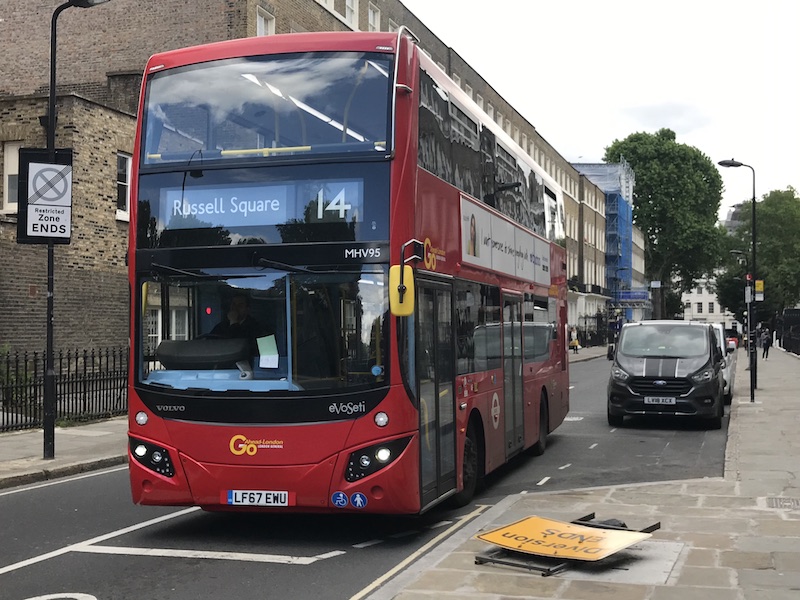
TfL’s much anticipated six week consultation about its “central London’s bus review” began today. It’s going to take that long to work out what’s planned if you rely on TfL’s website.
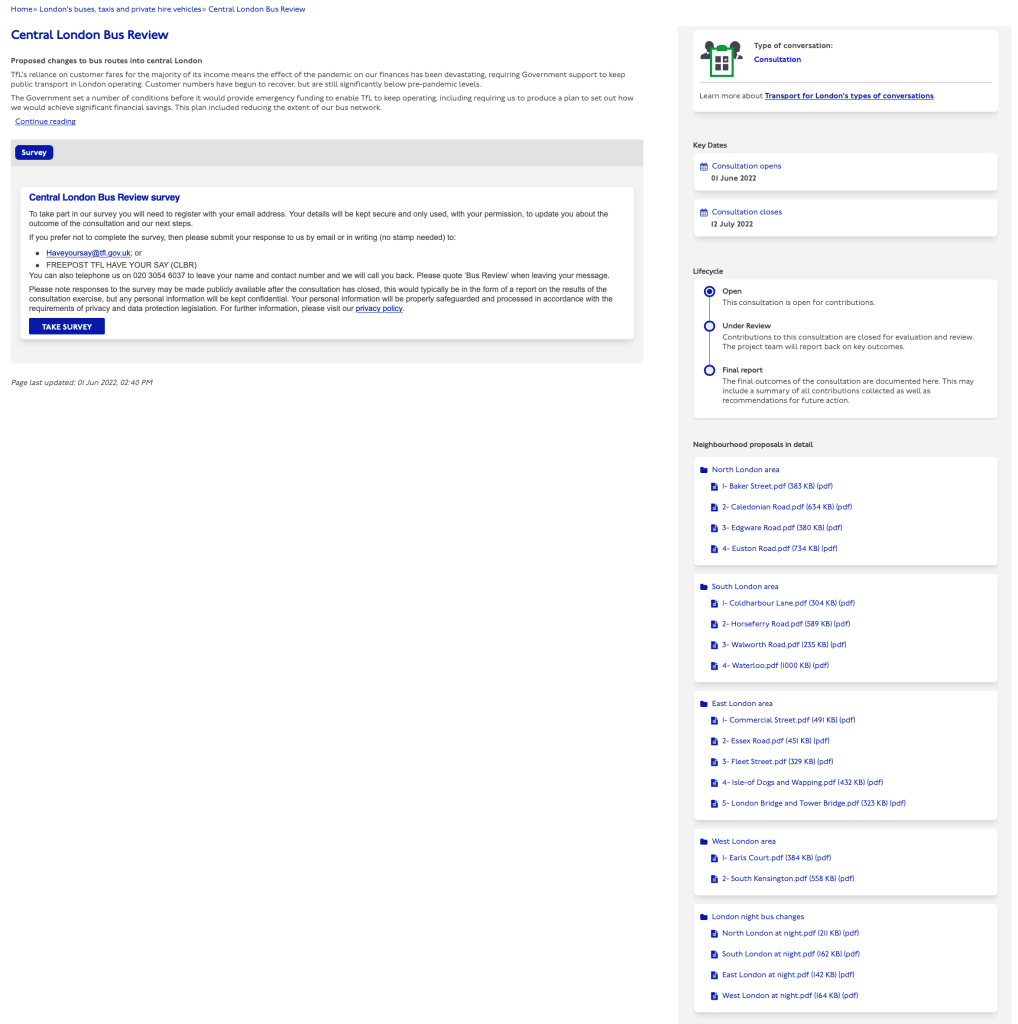

There’s no simple guide to tell you route by route what’s happening. It’s pretty much left to you to do your own comparisons between “current” and “proposed” maps to work out what’s changed in four quadrants – north, east, south and west. Which isn’t easy. There is a listing of “Neighbourhood proposals in detail” but these are for key corridors (eg Baker Street, Caledonian Road etc) rather than a quick look to see what’s happening to some of the 16 routes to be withdrawn. It baffles me why there couldn’t be a simple route listing of every route that’s changing and explaining what’s happening.


Luckily Callum Marius at MyLondon has come up trumps and published just such a list. You can see it here.
My predicted changes yesterday to cover for routes 11 and 24 disappearing turned out to be wide of the mark with TfL’s team obviously having a more extensive crayon colouring set then I had available. They seem to have gone for the ‘how can we involve as many routes as possible’ in the shake up rather than minimising knock on effects. Whereas route 11, for example is covered by a newly diverted 26 (at Aldwych) to Victoria instead of Waterloo, and from Westminster passengers can catch a newly diverted and extended 507 to Fulham (albeit single deck operated, presumably), other routes to be withdrawn involve more routes having to change roads traversed or destinations served.
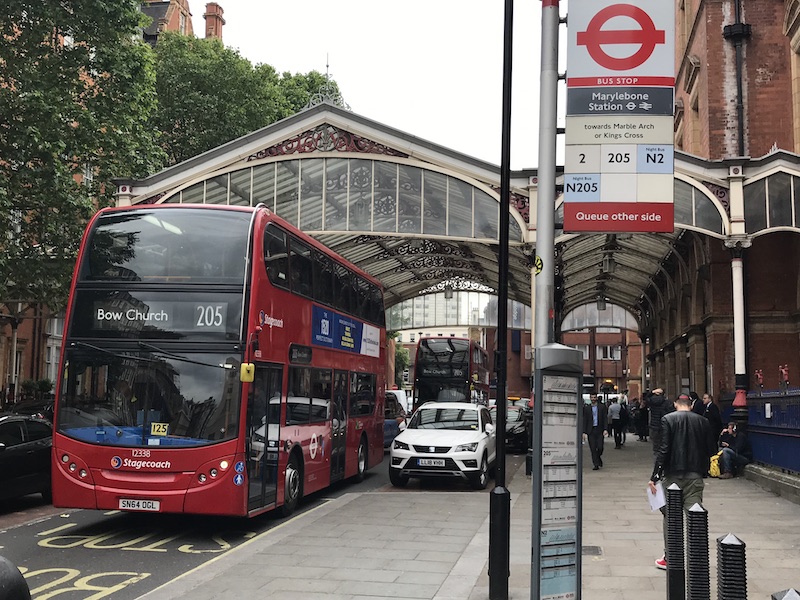
The upshot is, as anticipated, there’s hardly any roads left unserved by the route withdrawals but many ‘common route corridors’ have significant frequency reductions and some routes have a complete character change such as the 113 which has long taken passengers from Edgware and Mill Hill down Watford Way and Hendon Way to Marble Arch, will instead now dive off its old trajectory at Swiss Cottage and head for White City to replace the to be withdrawn route 31. Similarly route 189 which has long headed down from Brent Cross to Swiss Cottage will now wander over to Camden Town to cover for the eastern end of route 31 instead of continuing south to Marble Arch. With route 74 for the chop it means three frequent routes serving Baker Street axed but, it’s true there are enough other buses still in that street, it’s just that more passengers are going to face a change of bus.
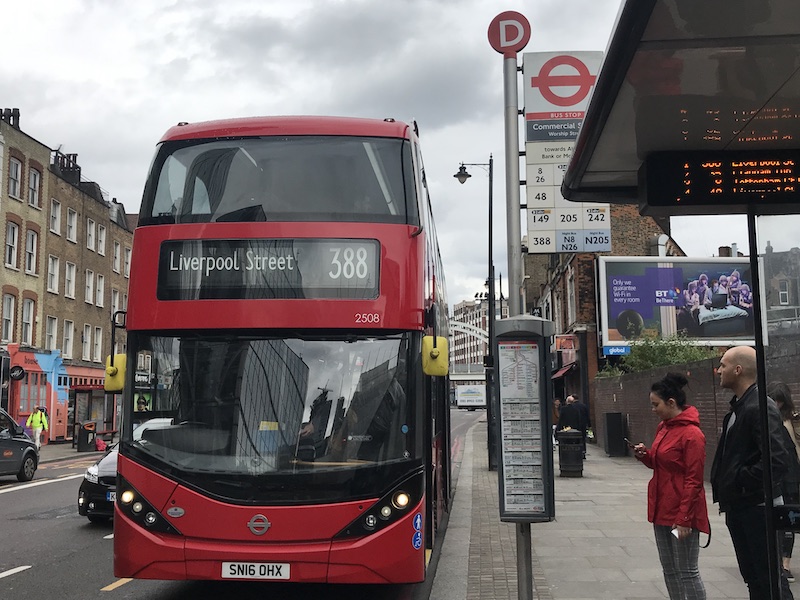
And that’s the story of this “review” and is one of four issues I have with these changes.
Firstly, passengers don’t like changing buses. Sure, the hopper fare means there’s no price penalty, but its the added inconvenience and additional waiting time that deters passengers who’ve been used to through buses. There’s going to be an awful lot more bus hopping with these changes and it will deter some passengers, that’s for sure.
Secondly TfL have made the decision “a minimum 12-minute scheduled wait time between buses” is indicative of a “high frequency core bus network”. I beg to differ. I reckon it should be 10 minutes or better. 12 minutes is bordering on the ‘where is the bus?’ thought in passengers’ minds as they wait, and too much of that and it will deter some passengers, that’s for sure.
Thirdly, making so many changes to bus numbers serving roads risks confusing and putting passengers off travelling, especially axing long established familiar numbers. This is all the more so when TfL have given up on producing maps and explanatory information for passengers with many bus stops and shelters devoid of anything useful. As has been covered in previous blogs ad nauseam as well as on other commentators’ websites the provision of bus information in London is an absolute disgrace. Staff at TfL are kidding themselves if they think they can communicate the scale of changes in this “review” effectively. Their track record indicates there’ll be widespread confusion which will deter some passengers, that’s for sure.
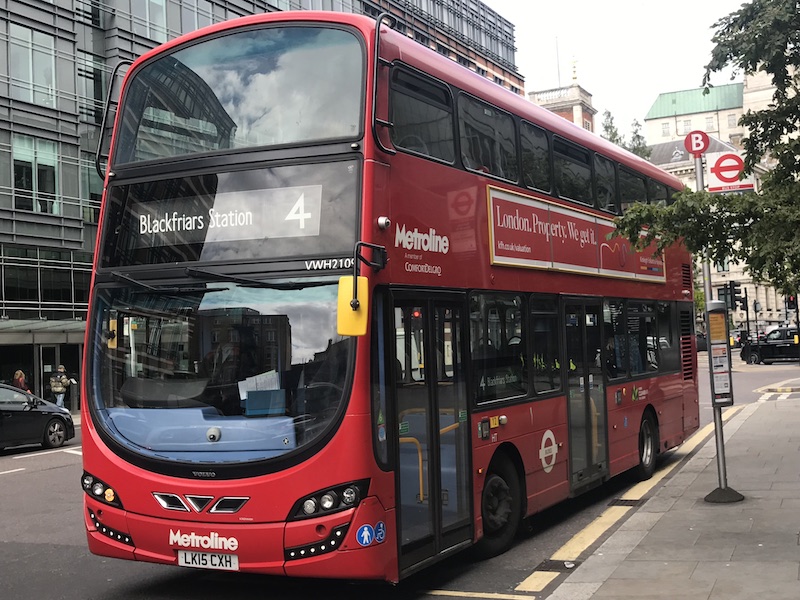
Fourthly, successful bus operators know to avoid keeping on making changes to the same bus routes at relatively frequent intervals. This further undermines passengers’ trust in using the network. Route 4, which is now up for withdrawal, was only altered itself in the last big “central London bus review” in June 2019 when it was diverted from Waterloo to Blackfriars. At that time it replaced route 388 which itself has seen changes every couple of years – terminating at Blackfriars in 2015, extended to Elephant & Castle in 2017 (replacing route 100), cut back to Liverpool Street in 2019 and then extended to London Bridge four months later that year. Now the 388 is going to be extended from London Bridge on to Peckham to replace part of route 78. Meanwhile route 100 which was changed to terminate at St Paul’s in the great 2019 switch around is on the move again being extended at its other end from Shadwell to Bethnal Green to replace route D3.
It’s not good to keep changing the same bus routes; it gives the impression planning staff don’t know what they’re doing. It also will deter some passengers, that’s for sure.
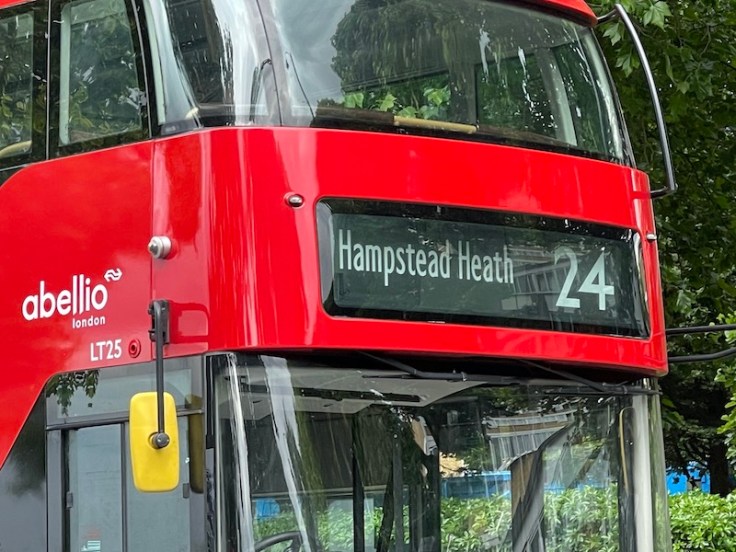
The upshot of all this is that this “central London bus review” won’t be the last as passengers will be driven away. The downward spiral of managed decline is now well underway in London. As I concluded in yesterday’s blog the £1.65 fare is simply unsustainable and TfL needs to think about attracting and encouraging passengers not confusing and deterring them, as these changes which will almost certainly be badly implemented, surely will.
Roger French
Blogging timetable: 06:00 TThSSu


And the hopper fare assumes someone hasn’t already changed buses. So there could well be a price penalty for some passengers who have to change more than once. Especially if the wait time between buses increases
LikeLike
They should commercialise them let out of London services. They won’t let people on free like they do in London, teenagers boarding buses without their photo cards and children 5 to 18 travelling free, no wonder there is no money to run buses. Majority of the buses on the outskirts like Bexleyheath only joined London Regional transport in 1988 and there’s threats of cuts to these such as the 428 and 492. I’m sure the private companies will squeeze profit from them rather than scrapping them completely
LikeLike
Those buses on the outskirts of London were never commercialised, they were part of the London fare structure, charging London fares and accepting London tickets. And no doubt being funded by London. Just not operated by London Transport, which is why they ended up being tendered along with all the others.
LikeLike
HAPPY NEW YEAR all. Yeah Nick good points does the London regulatory scheme really work, commercial fares are so cheaper, me & 5 mates went into Brum after 6 last night & it was £4 for all 5 of us. We’re still in the City & After our New Years Morning Spoons Breakfast were off to Villa Park for an afternoon of misery for £7 for the 5 of us so for two days travel we would have paid £1.10 each per day. Who needs franchising when Brums buses even on a Bank Holiday are frequent & so cheap?
LikeLike
I could not get on a 16 last night as it was so packed ! Seems very unfair that the Cricklewood area looses all three of it’s routes into the west end, yhe 16, 113 and 189, whilst nearby Willesden retains alm of their three.
LikeLike
Having clicked on the link that Roger has kindly provided at the top of this blog it is important you click on “continue reading” to be able to take in the enormous amount of stuff that they have put out about this”. I can’t decide on whether it comes under “we must do things thoroughly” or ” put enough stuff and people won’t bother ploughing through it”.
I have only skimmed through what there is and found it virtually impossible to take in what is proposed. Even when I did try to read some of the area proposals it was very heavy going and I needed to keep referring to the current and proposed maps.
What I haven’t seen anywhere from TfL is any work done on looking at the question “why are there fewer passengers?”. There are doubtless many reasons, some beyond their control, such as Covid, and the push to change how and where we work. Some are the result that Roger highlighted in his blog yesterday – an almost total absence of investment in publicity and public face. The number of times I have sat on buses that have been told to wait to even out the schedule suggests that the schedules have too much running time. Would that so that operators can avoid getting penalised for not running on time?
As an aside, although a contributor to the amount of running time now required, was an observation from yesterday. I needed to go by 208 bus from Bromley to Orpington at about 1700. When I got on the bus was already quite full and I had to sit upstairs at the back. As a youth the phrase “wait until the bus stops” meant I should wait until the bus had come to a halt before stepping off from the platform. Presumably now ingrained through safety training it has come to mean that I should not getup from my seat until the bus has stopped. Older people were following the former, younger people the latter. With buses being longer and the way off not being opposite the stairs quite a number of seconds are taken up by this change in behaviour at each stop.
LikeLike
James Bunting – I’m glad someone else has noticed this new trend to stay seated. I see the same thing happen on trains when people only gather together “all their personal belongings” and get out of their when the door-opening buzzer sounds, then get blocked from alighting by the new passengers getting on first! It’s not helped on trains with a Guard who has to check that no part of the train has stopped beyond the end of the platform before releasing the doors, even on a four-car train at a twelve-car platform.
LikeLike
On quite a lot of provincial buses, particularly Arriva, there are signs specifically telling you to ring the bell and stay seated until the bus stops. I assume it’s intended to reduce the amount of trips and falls on moving buses.
GoNE buses even have signs telling you that it’s risky to change seats while the bus is moving.
LikeLike
Apart from the side of me that rides buses for the enjoyment, the side of me that relies on buses when crowds on trains get too overwhelming, it feels like this is defiantly TfL tunnel-visioned themselves on commercial Growth than Community Growth, of course, they need some commercial benefit to run these services in the first place however these constant cutbacks and withdrawals don’t help those who heavily rely on bus services
LikeLike
Dear, oh dear!
I’m appalled by the ‘bus every 12 minutes’ being ‘high frequency’. Just take a step back and think, TfL: if you reduced tube train frequencies to ‘every 12 minutes’ you’d certainly lose passengers – you’d probably have a riot outside your planning offices! And – more importantly – London would be flooded with even more cars.
Interesting about passengers not liking to change bus. Maybe that can be broken down a bit: (1) more wasted time, waiting for several buses instead of 1; (2) needing to plan your way about, without a proper map; (3) way-finding at interchanges is not easy – signs (if they exist) are small, information at stops is often out of date, long walks and crossing roads may be involved. All of that can be corrected – indeed, it should be a matter of urgency, whether or not the network is being re-drawn. It is not possible to provide buses from everyone’s nearest stop to everywhere else in London, so it is really important that people are happy and comfortable changing bus (or bus>tube etc.). Please, TfL, address the issues of passenger information, and layout of stops at transfer points.
The whole exercise is to cut costs; but have TfL researched what people use buses for? – and what they would use them for if the service were better? As they are, the routes appear to be for short local journeys to work/shops/leisure, and also for getting to rail/tube stations for longer distance travel (though some of those connections are not wonderful). Do people use buses for longer (say 2 miles +) travel, except in outer London where there are no peripheral rail/tube lines? My London friends mostly say that a car is still essential for a lot of their travel needs: the buses and trains are OK to get to central London and one or two other places. A better integrated bus-tube-rail network should generate a lot more use – and revenue!
LikeLike
The way these changes have been done strikes me as someone just thinking – what is the best way such that each road is still served by at least one bus – and then just removing as many routes as possible and re-routing others in illogical directions. For example, while there will still be buses along the length of Euston Road, many passengers travel the route from Paddington through Baker Street and Euston to Kings Cross on the 205 – now that route is going to turn north at Kings Cross which, for passengers coming from the east, is surely a less desirable destination. Routes should try and match the greatest passenger flow to reduce the number of changes, and when you look at the figures it is clear that this is most often going straight along a certain road – for example the most used route – the 18 – heads pretty much north west to south east along the A404 the whole way. Having a route head north and then suddenly turn west or east is going to dramatically reduce through passenger numbers.
LikeLike
Roger thanks for this analysis , excellent as ever , only last Wednesday I used the 205 from Baker St to Chartered Accountants Hall so it’s loss will have more effect for me than the end of the 144! To everyone Have A Happy Jubilee.
LikeLike
The number of broken passenger “links” is huge . . . in the past, TfL have refused to change routes where there are too many broken links . . . funny how times have changed.
I’m concerned that TfL have succumbed to “crayon fever” without considering passengers . . . just “they can use the hopper fare” . . . of course, using contactless and Oyster cards won’t be more expensive, as they’ll still reach the daily limit anyway.
If operators had relaxed targets for on-time operation, then inflated running times would be pared back, saving resources. If routes had appropriate frequencies for loadings, so outer edges were scaled back to 5 BPH and inner sections retained at 10 BPH, then resources would be saved.
I wonder how many commentators know that there is no effort made any more to co-ordinate frequencies along roads served by more than one route . . . operators provide their own timetables upon tendering (as guided by outline frequencies in the tender pack) . . . so it is entirely possible for two routes at the same frequency along the same road to run at the same minute (maybe even at different running times as well)!!!
In much the same way that Network Rail planners prevent trains from different TOCs running on the same track at the same minute, TfL could specify detailed timetables to operators on tendering . . . operators would submit prices in the usual way, and TfL would select the cheapest. Of course, this would require TfL “planners” to actually “plan”, with a proper overview of their network. . . . ho hum. I’ll not hold my breath . . .
LikeLike
James Bunting – I’m glad someone else has noticed this new trend to stay seated. I see the same thing happen on trains when people only gather together “all their personal belongings” and get out of their when the door-opening buzzer sounds, then get blocked from alighting by the new passengers getting on first! It’s not helped on trains with a Guard who has to check that no part of the train has stopped beyond the end of the platform before releasing the doors, even on a four-car train at a twelve-car platform.
LikeLike
The comparison with the culture and communication of bus service changes in Scotlands capital city Edinburgh occurring next weekend could not be more stark.
https://www.lothianbuses.com/news/2022/04/service-change-5-june-2022/
Lothians Commercial team has tweeked their network to best effect with headlines and diagrams of route revisions.
Increased Saturday and night services as visitors return, speeding up East Lothian services and reinstatement of X5 to Berwick.
But honest that 22 has to be curtailed effectively as its stuck in traffic caused by tram extension works.
This has been in the public domain for over a month, with specifics for each route under each brand with downloadable timetables able to printed off.
I received a timely reply to an email saying paper timetables are not going to produced yet, but I expect a new map to be available in Travel Centres to replace the current one they produced earlier this year.
Paper timetables are nice to have however it’s not practicable to carry 50+ leaflets around, Lothian though give me the the tools in the form of PDFs to make my own that meets my needs.
LikeLike
Lothian X5 to Berwick? Surely they mean North Berwick?
LikeLike
Lothian’s decision to cut the northern section of service 22 between the city centre and Ocean Terminal will come back to bite them. Ocean Terminal is home to one of Edinburgh’s most visited tourist attractions, namely the former royal yacht Britannia. It is in the top five most requested “how do we get to…” enquiries from visitors I deal with. While there are other routes terminating at Ocean Terminal, they tend to meander their way there and all are also subject to tram works diversions and delays and depart from numerous different city centre bus stops. Unless Lothian think most visitors will take one of their Majestic Tour buses at a premium ticket price instead?
LikeLike
There’s going to be a lot of confusion regarding which bus goes through which area. Could “suffix” numbers be reintroduced to bring about some clarification?
LikeLike
I endorse the view that existing routes should maintain their general direction, rather than change direction. Passengers often base their home / work places depending on how easy it is to get there, often by bus. To change the general direction of routes will cause untold upheaval.
LikeLike
One change not noticed is the temporary diversion of the 419 to Roehampton as a temporary replacement for the 72 will now become permanent.
LikeLike
It is clear that very many buses have low passenger loadings outside of the peaks. The question is what is the best way to reduce duplication of routes whilst minimizing any inconvience to passengers. I think as well TfL ought to keep to the traffic commisioners definition of high frequency ie 10 minutes
TfL could also reduce stand times on high frequency routes as the aim with those i to keep th 10 minute interval rather than try to keep to a working schedule
LikeLike
Transport for West Midlands also consider 10mins as high frequency you get that on the 4 6 9 14 16 23 51 74 94 97 to name just a few and then you have services such as 12/13 to the Black Country which combine to run every 7 mins between the City & Warley and its state of the art Aquatic Centre . There are no planned systematic cuts to Brums network which demonstrates the folly of bus franchising and that our friends in the North West may not be heading for bus utopia & of course Diamond Bus has been given leave against TfGM for a judicial appeal.
LikeLike
I am horrified by the loss of the no 4 – which many from Highbury use to get to school in the city, Also how do you get from Waterloo to Liverpool St without the no 26. There is no tube without changing.
But there are many horrors, eg the 205 change.
The emphasis on the tube and the neglect of the bus network is now coming home to roost with the resulting drop in passengers .
Clearly maps are absolutely essential now,, Does TfL need a “regulator” to tell it how to serve the public?
LikeLike
With the withdrawal of some routes and the reduction of frequencies on others there is scope for some culling of the number of separate bus stops at busy points, if only to reduce the amount of walking required when “hopping” between routes. I was please to see in the consultation report for the 43/143/269/271 proposals that there were many adverse comments on the 210 buses to Golders Green stopping some way up Highgate Hill rather than near Archway like most other routes – though it is not clear that TfL have accepted the point. ( I recently had to ask a friendly driver on another route where I could catch the 210!)
LikeLike
Thinking about remaining seated: we lived in Ipswich until 2017 and Ipswich Buses not only encouraged people to stay seated until the bus stopped but declared that “the driver will be happy to wait for you”! It’s a different world outside the M25 …
LikeLike
I have a sneaky feeling that these “proposals”, clearly designed solely by Number-Crunchers” rather than any sensible planning, are politically motivated. It will be known that taking off such high profile services will cause absolute dismay to many Londoners, and it can all be blamed on the “wicked Tory government” for forcing costs to be cut. BUT, in some cases the Mayor will ride to the rescue and “Save” routes such as the 11/16/24 (take your pick) and everyone will be happy again. Or am I just being my normal cynical self?
LikeLike
TFL has failed to live within its means for several years. It froze fares for several years It kept agreeing to excessive demands by tube train drivers as well as allowing lots of restrictive practices by TfL staff
TfL has also grown its already top heavy management
It is now dabbling around in property development in spite of that not being TfL’s core business and in spite of them not having the expertise in that
TfL could get their finger badly burnt with this and the passengers and London tax payers will end up picking up the bill
LikeLike
I’m intrigued that TfL “axing long established familiar numbers” “risks confusing and putting passengers off travelling” given that the likes of TrentBarton and Transdev get lauded for their innovation and superior customer service when they do exactly the same thing.
LikeLiked by 1 person
That’s because superior customer service isn’t a thing for TFL… in fact ANY customer service isn’t a thing for TFL anymore….
LikeLiked by 1 person
National Express West Midlands & Transport for West Midlands did the same across the Black Country a few years ago here most regular bus users still use the old numbers however I regularly get asked has the 140 gone even though its the 8 now or have you seen the 127 when it’s the 13 now . Passengers don’t take a blind bit of notice of simplicity they only want the bus to actually arrive,!
LikeLike
This afternoon I took advantage of the London Transport Museum Jubilee Offer of a complimentary admission ticket. Getting to Victoria was straightforward with SouthEastern clearly advertising that they were running a Saturday service. No simple information as to what TfL were doing. Onward to Embankment was slightly chaotic as station closures for crowd control appeared to be rather fluid. A number of people on my District Line train were confused when we sailed through Westminster. My exit from the station was by an obscure emergency door, although I did note it had a sole Oyster validator.
On my return I thought I would walk to Temple but happened to see a number 11 bus at Aldwych and was very close to the stop. As I got on the driver was in the middle of making an announcement which I guessed was about a diversion as Strand was closed. Before boarding I just had time to note a poster on the shelter about the latest proposals and pleading with people to respond and telling them where to find the information. It was not the official one that was included in the stack of stuff released yesterday. If there is one at Aldwych my guess is that it will also have been posted at other shelters, and perhaps stops, in the hope that people will see it.
The bus journey was via Waterloo Bridge, St Thomas’s Hospital and Horseferry Road, rejoining the line of route at Westminster City Hall. We followed a 24 which had got to Aldwych via Kingsway, so an even longer diversion.
LikeLike
The interesting thing will be the impact these cuts and previous ones will have on the bus garages, Many are already lightly loaded. The 307 with its new contract goes down by a PVR of 1
LikeLike
Routes being withdrawn with Garages and PVR
4 HT 17
11 SW 18 NBL
12 Q 15 NBL
14 AF 21
16 W 14 NBL
24 QB 16 NBL
31 WJ 15
45 WL 13
72 S 10
74 AF 18
78 AE 16
242 CT 14
349 E 13 NBL
521 RA 15
C3 X 9
D7 SI 11
Routes which are already having PVR changes (Does not include those in Consultation)
91 HT 17 (Reducing to 15)
52 AC 18 (Reducing to 16)
80 A 16 (Reducing to 15)
92 G 18 (Reducing to 16)
93 a 23 (Increasing to 26)
119 C 14 (Reducing to 12)
154 A 17 (Reducing to 16)
155 SW 19 (Reducing to 17)
159 QB 25 (Reducing to 20)
187 WJ 12 (reducing to 10)
207 GW 29 (Reducing to 28)
220 RP 25 (reducing to 24)
307 PB 15 (Reducing to 14)
339 LI 12 (Reducing to 11)
E 1 AV 8 (Increasing to 11)
H32 AV 12 (Reducing to 10)
607 G 20 Reducing to 19)
Note some of the above may be changing operators
LikeLike
Of course, could some of the possible thinking behind the cutting of through routes to Central London be a rouse to get more people onto an Underground which will have more capacity thanks to Crossrail, thus bringing more revenue to TfL’s coffers?
LikeLike
Mike Harris has posted a map of the “new” route network purely for Central London on his busmap website.
Click to access GLBM%20-%20Central%20London%20Consultation%20Bus%20Map.pdf
Without the crayons it brings home the loss of low numbered routes.
Lowest numbered route in Whitehall is now 26!
LikeLike
Bus Cuts are Coming to Scotland so it is not just TfL
The Scottish Government is cutting the Corvid recovery grant earlier than expected. It now expected to be cut at the end of July but has not yet been formally confirmed. If it is to be axed then it will have to be formally announce soon in order for the operator to notify the Traffic Commissioners of services changes
. This will be 2 months early than for England so may give an indication of the cuts England will see . Some areas may not be so hard hit as they struck lucky with BBB funding
The talk is of 20% service cuts but these are unlikely to fall evenly with the Rural areas being much harder hit
LikeLike
Removing the 205 route from Paddington to Bow makes no sense with the amount of people travelling on this route especially as it covers many main line stations for when the tube stops at night and engineering works with no alternative way from getting west to east London.
LikeLike